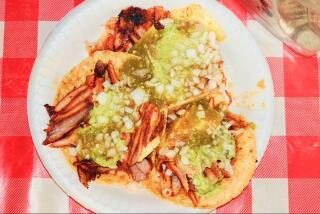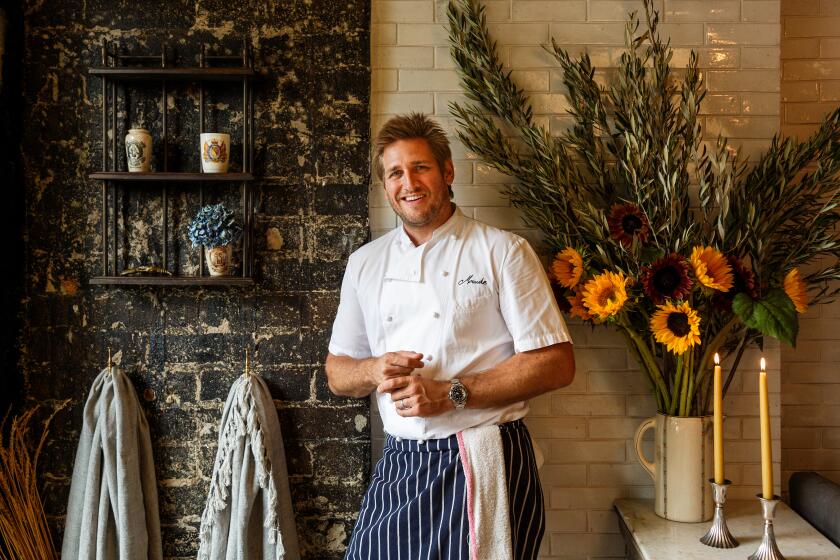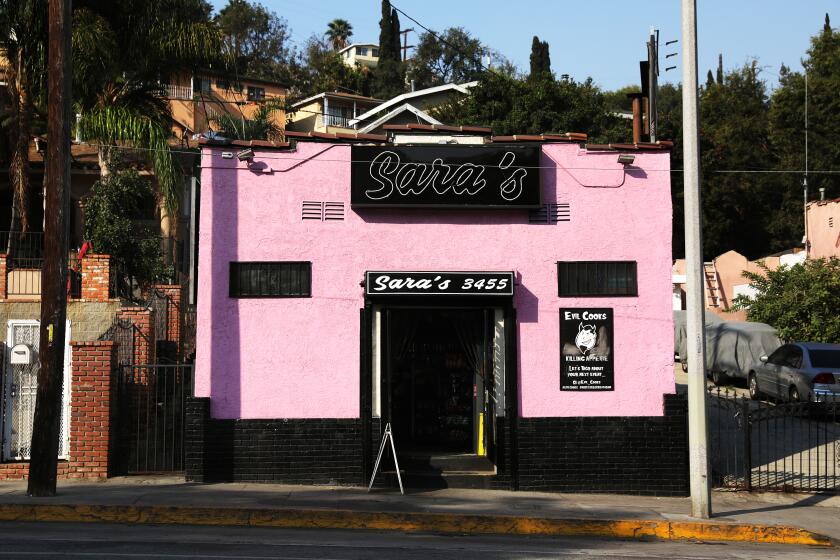Lessons learned from a French meal
EATING is one of my favorite ways to pass the time on the road. I could justify my feeding habits by observing that the appreciation of food -- where it comes from, how it is made and served -- helps a traveler understand foreign cultures. Honestly, though, I just like to eat and always thought I was pretty good at it.
But then I moved to France and discovered I was in kindergarten when it came to sitting down at the table. The French take the enterprise of eating very seriously. As a result, casual consumers like me who spend time in France find surprising depth, complication and challenge in the simple act of keeping body and soul together. We also relearn what we always knew: The more you put into something, the more you get out of it.
Advanced eating can be pursued only at fancy, expensive places, where the menu, not to mention the wine list, goes on for pages. Don’t bother to enroll if money is an issue; if it is, you’ll need to save up to pursue your studies at wide intervals.
“The Food Lover’s Guide to Paris,” by Patricia Wells, covers the toniest places to dine in the French capital. Outside Paris, I rely on the Michelin Red Guide and the tome-like catalog of the Relais & Chateaux chain, which I used on a recent visit to the Vosges Mountains of eastern France.
The Relais & Chateaux guide specifies hostelries noteworthy for cuisine. That’s what led me to reserve a room for three nights at Les Bas Rupts, near the pretty lakeside town of Gerardmer. When I pulled in after a long drive from Paris, I was disappointed to find that the hotel is on a heavily traveled road. The swimming pool is the size of a California hot tub, and my room was cramped, decorated with no more distinction than a Hilton. (The next night, I switched to a bigger double.)
It was only at dinner that I started to get the point: It’s the food, stupid.
The great luxury of staying at a place like Les Bas Rupts is dining magnificently, with wine freely flowing, and having only to take the elevator to get to bed, a different brand of hedonism from the kind that is usually encountered at pricey places in the U.S., where the food may be so-so but the room is a revelation.
I will long remember that first dinner at Les Bas Rupts. I was seated at a table by the entrance, without a mountain view, and given the prix fixe menu that went with the demi-pension plan I had booked. Instead, I asked to see the a la carte menu, from which I chose dishes that appealed to me most: an appetizer of foie gras and pigeon, served with a bread tray offering as wide a selection of rolls as a Whitman’s Sampler, then free-range chicken in a morel mushroom sauce, followed by two heart-stopping cheeses from nearby Muenster. No dessert, just another glass of a Hugel white wine from Alsace. The waiter didn’t raise an eyebrow when I asked him to keep the half-full bottle for me.
The next night, it was white fish quenelles in lobster sauce and a veal chop, with the last half of the Hugel and the first of a red Meursault from Burgundy, at a table with a view. The night after that, I kept it simple by ordering a steak and green salad.
Each of these dinners cost about $75, accompanied by memorable wines, which seems a reasonable price to have paid for the lessons I learned about the fine art of eating on the road:
* It was boorish to have stayed and dined three nights at Les Bas Rupts. Many French go to Relais & Chateaux establishments for just one night, I’ve noticed. One night of such extravagance is enough.
* Take a nap in the late afternoon before a big meal. If you’re tired, you won’t be able to appreciate the pleasures presented to you at the table.
* Bathe and dress for dinner, stylishly but comfortably so your stomach can expand. Alas, even the French have started to dine in khakis and jeans. But the process of dressing prepares you for an occasion, and your appearance tells the restaurant staff members that you appreciate their efforts.
* Have an aperitif in the lounge or bar, not for the effects of the alcohol but to give you time to study the menu. Don’t eat the cheese straws -- which are never as good as potato chips -- that they generally bring with the kir royales. I’m not even all that keen on the tidbits, or amuse bouches, that waiters at haute cuisine restaurants bring to the table before the first course. They only clog the palate.
Your job at this critical juncture is to look at the menu and think about what you want most, a matter of tapping your inner soul. Knowing what you want and getting it is, I think, the great challenge of eating well.
* Watch the people around you. Notice what they are eating and how it’s served. If they catch you looking, start up a conversation with them. People who favor restaurants like Les Bas Rupts love to talk about food and will happily review the dishes they have ordered. Sometimes they will even offer you a taste.
* Make friends with restaurant staff members, if only to feel at home. Never let anyone intimidate you. The best way to do so is to engage your servers in the decision making process, to respect their counsel and to politely override them if you see fit.
* After dinner, go directly to bed. If you have had enough foie gras and Meursault, you’ll sleep tight. But when you wake up, think about last night’s dinner -- and what you’re going to have tonight.
*
Susan Spano also writes “Postcards From Paris,” which can be read at latimes.com/susanspano.
*
Savory stays
Les Bas Rupts and Le Chalet Fleuri, Gerardmer, France; 011-33-3-29-63-09-25, www.bas-rupts.com; doubles $140 to $210.
Relais & Chateaux, (800) 735- 2478, www.relaischateaux.com.
More to Read
Eat your way across L.A.
Get our weekly Tasting Notes newsletter for reviews, news and more.
You may occasionally receive promotional content from the Los Angeles Times.










